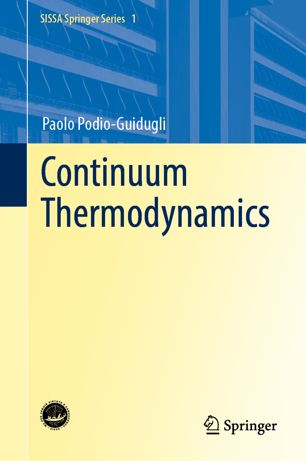

Most ebook files are in PDF format, so you can easily read them using various software such as Foxit Reader or directly on the Google Chrome browser.
Some ebook files are released by publishers in other formats such as .awz, .mobi, .epub, .fb2, etc. You may need to install specific software to read these formats on mobile/PC, such as Calibre.
Please read the tutorial at this link: https://ebookbell.com/faq
We offer FREE conversion to the popular formats you request; however, this may take some time. Therefore, right after payment, please email us, and we will try to provide the service as quickly as possible.
For some exceptional file formats or broken links (if any), please refrain from opening any disputes. Instead, email us first, and we will try to assist within a maximum of 6 hours.
EbookBell Team

4.8
84 reviewsThis book deals with an important topic in rational continuum physics, thermodynamics.Although slim, it is fairly well self-contained; some basic notions in continuum mechanics, which a well-intentioned reader should but may not be familiar with, are collected in a final appendix.
Modern continuum thermodynamics is a field theory devised to handle a large class of processes that typically are neither spatially homogeneous nor sequences of equilibrium states. The most basic chapter addresses the continuum theory of heat conduction, in which the constitutive laws furnish a mathematical characterization of the macroscopic manifestations of those fluctuations in position and velocity of the microscopic matter constituents that statistical thermodynamics considers collectively. In addition to a nonstandard exposition of the conceptual steps leading to the classical heat equation, the crucial assumption that energy and entropy inflows should be proportional is discussed and a hyperbolic version of that prototypical parabolic PDE is presented. Thermomechanics comes next, a slightly more complex paradigmatic example of a field theory where microscopic and macroscopic manifestations of motion become intertwined. Finally, a virtual power format for thermomechanics is proposed, whose formulation requires that temperature is regarded formally as the time derivative of thermal displacement. It is shown that this format permits an alternative formulation of the theory of heat conduction, and a physical interpretation of the notion of thermal displacement is given.
It is addressed to mathematical modelers – or mathematical modelers to be – of continuous material bodies, be they mathematicians, physicists, or mathematically versed engineers.